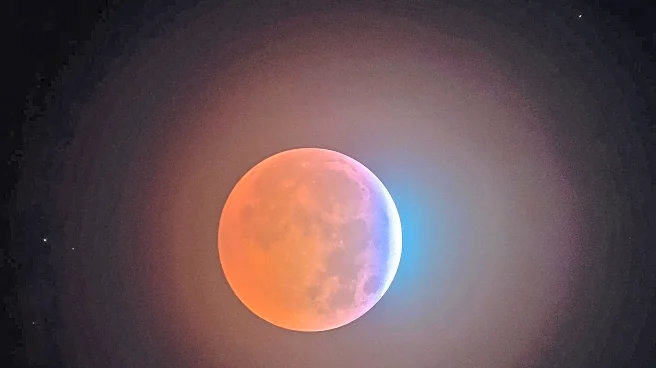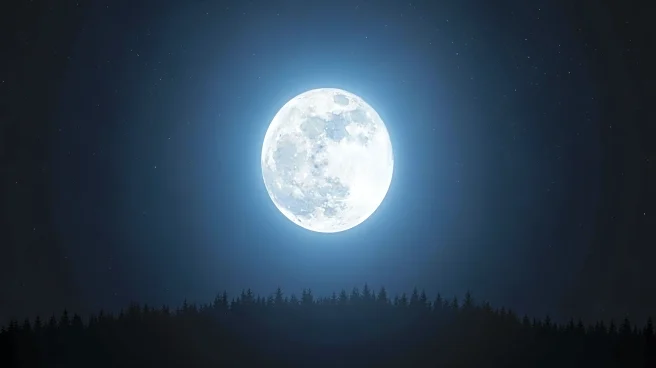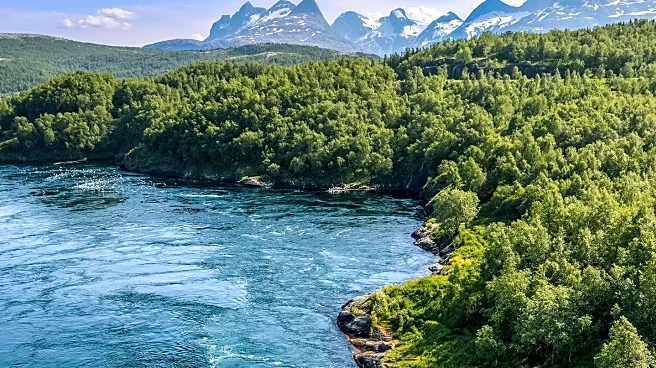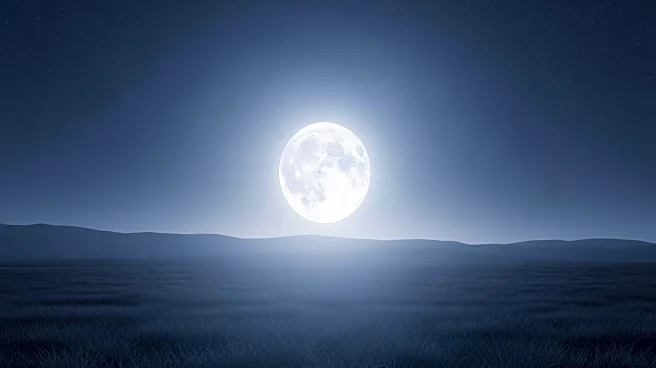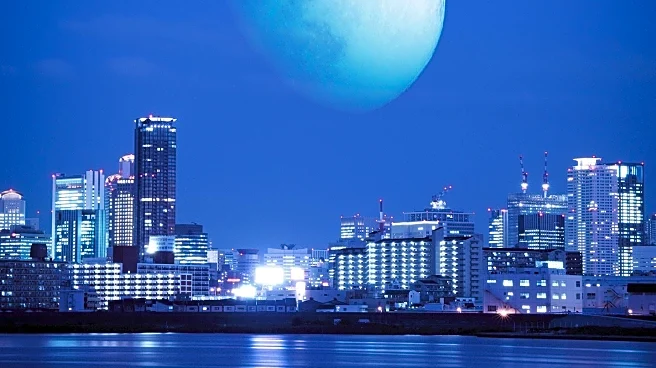What's Happening?
Skygazers are in for a treat as November's supermoon, known as the beaver moon, is set to be the brightest full moon of 2025. This astronomical event will occur on November 4-5, with peak illumination
at 8:19 a.m. ET on November 5. The supermoon phenomenon occurs when the moon is at its closest point to Earth in its elliptical orbit, known as perigee, making it appear larger and brighter than usual. The beaver moon is named for the time of year when beavers are most active in preparing for winter, or historically, when beaver traps were set for pelts. The moon will appear nearly full from November 3 to November 8, providing ample opportunity for viewing despite potential weather disruptions.
Why It's Important?
The supermoon offers a unique opportunity for both amateur and professional astronomers to observe the moon's increased brightness and size. This event highlights the moon's elliptical orbit and its impact on lunar visibility. For the general public, it serves as a reminder of the natural wonders visible from Earth, encouraging interest in astronomy and science. The increased brightness of the supermoon can also affect nighttime activities, providing more natural light for outdoor events and potentially impacting nocturnal wildlife behavior.
What's Next?
Following the supermoon, November will also feature a micro new moon on November 20, when the moon is at its farthest point from Earth, known as apogee. This will contrast sharply with the supermoon, as the new moon will be invisible to the naked eye. The cycle of lunar phases continues to offer varied viewing experiences for sky enthusiasts, with each phase presenting different observational opportunities.
Beyond the Headlines
The supermoon phenomenon underscores the importance of understanding celestial mechanics and their effects on Earth. It also highlights cultural and historical aspects, such as the naming of the beaver moon, which reflects human interaction with nature. This event can inspire educational initiatives and public interest in space exploration and environmental awareness.


